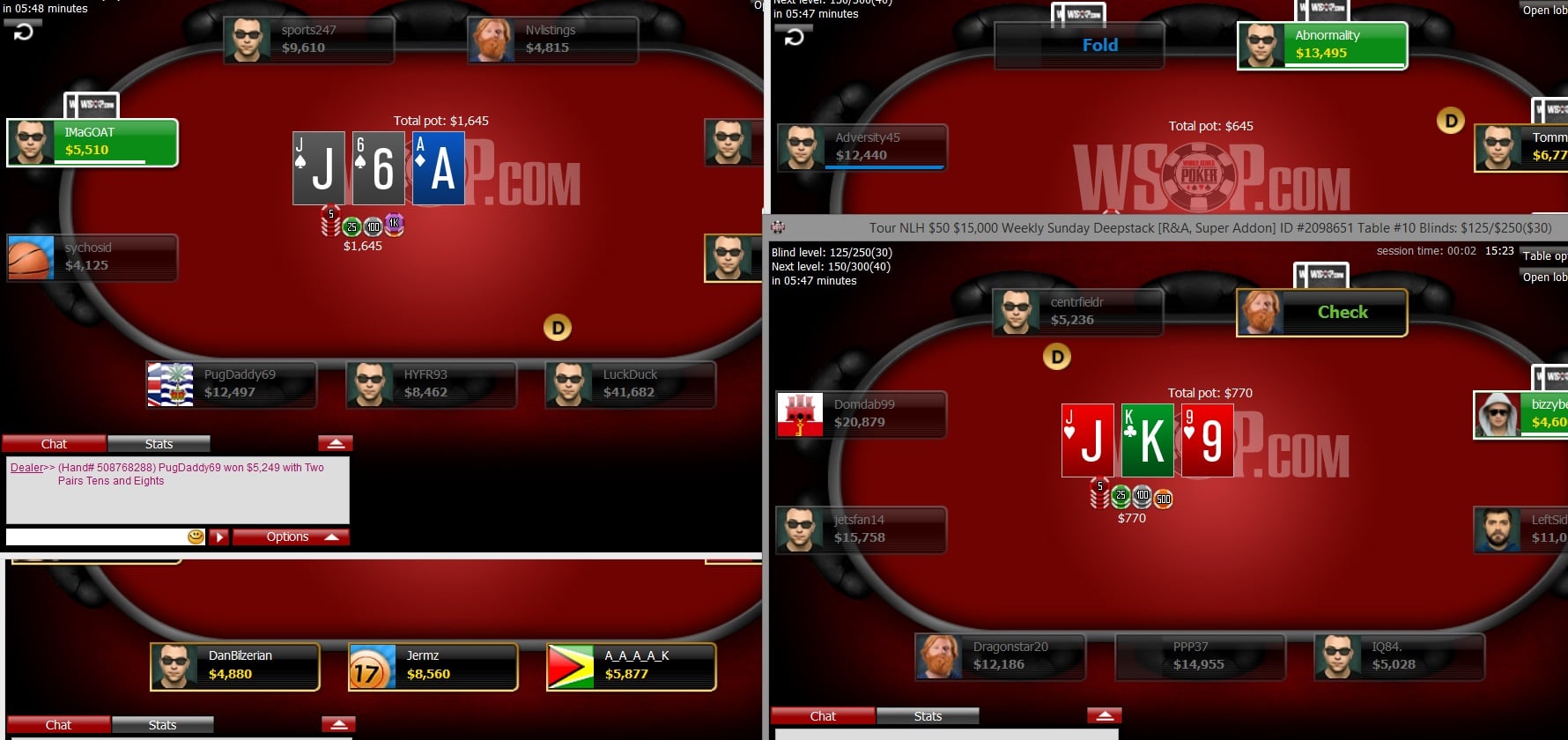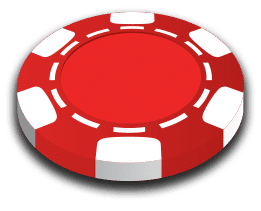As I explained in the first article of this series, my primary goal is to facilitate an easy transition for cash-game players who want to get into tournaments. The bulk of the series will focus on live tournaments, but online tournaments for many provide an excellent first step. Naturally there are considerable geographical variations in terms of which online sites players can access, but even in the US it is now possible for everyone who is determined to do so to play online poker with a certain amount of confidence the games are safe.

Advantages Of Online Poker Tournaments
There are three major advantages that online tournaments have over their bricks-and-mortar counterparts. Perhaps the most important if you’re trying to turn a profit is the much lower rake. As discussed in my previous article, live tournament rake can be crippling, particularly for the cheaper dailies where it can get as high as 40%. Online tournament rake has been fairly uniform ever since online poker was first offered and typically is no higher than 10%. This represents a huge difference in profitability between the two arenas.
In preparation for this series, I spoke to many Las Vegas cash grinders to find out why so few played tournaments. After citing the rake, the next most common response was tournament variance. Back before Black Friday when I paid closer attention to these things, I noticed a typical ITM% (in the money percentage) for successful tournament players was around 20%. For standard pay-out structures in which the top 10-15% of players get paid, this 20% seemed to be something of a sweet-spot. Too far above this value and the ROI tended to drop, which says something interesting about tournament strategy that I’ll develop in the next article.
The point I want to focus on for now is simply that even the best tournament players lose far more frequently than they win. Contrast this to a good cash-game player who can expect to win roughly two out of three sessions. It’s not uncommon for a winning tournament player to have significant 0-for runs where their bankroll heads inexorably downwards, or much longer runs where the only financial relief is a handful of min-cashes that come nowhere near to covering all the lost buy-ins. Then they’ll come top three in a decent tournament and finally be ahead.
Poker Tournament Bankroll Requirements
The net result of all this is that typical bankroll recommendations for tournament pros start around 200 buy-ins and move up depending on levels of paranoia. In live tournaments this translates into a bankroll of at least $20,000. You might reasonably argue that if this number were taken seriously, the WSOP Main Event field would be less than a hundred players. The point is that without satellites, swapping action, financial backing and shot-taking, the field of professionals in the Main Event would be a lot smaller. The majority of the entrants are recreational players; a fact that motivates many pros to chase up the cash to play the event.
If you’re reading this, you’re likely either a recreational player or play cash games for a living. In either case you can replenish your tournament bankroll and do not need to follow the 200x minimum guideline mentioned above. That said, if you’re only going to play live tournaments, be prepared for inevitable periods when that bankroll will head downwards for an extended period of time.
Online tournaments provide two ways of limiting these inevitable downswings. The first is simply by playing a much higher volume. Let’s suppose, perhaps optimistically, that the worst downswing you hit in a year is an 0-for-20 streak. As a live player putting in a lot of volume you may play twenty tournaments in a month. If you’re playing online, however, you can reasonably expect to knock off twenty tournaments in a weekend. The much higher number of hands per hour in the online environment, combined with the ability to play multiple tournaments at once, means the losing streaks take up less time.
Perhaps more importantly, there are plenty of online tournaments with decent structures for an entry fee as little as a dollar or less. Obviously the prizes scale accordingly, but an 0-for-20 run playing $10 online tournaments is a lot easier for most of us to handle than a similar losing streak for $100 live ones. Thus both rake and volume provide compelling fiscal reasons to begin your tournament journey in an online setting.
Learning Poker Tournament Skills
The third major advantage I see online tournaments offering over live ones is the possibility for accelerated learning and profiling of opponents. To give a specific example, here in Nevada we have access to WSOP.com. Compared to options before Black Friday this is a little bare bones, but like the vast majority of sites it does offer the ability to take notes on opponents and to review hand histories.
I have suggested elsewhere that efficient player profiling is a key part of cash-game success. For reasons that I’ll explore next time, I feel it may be even more important facing tournament opponents. And equally importantly, profiling opponents and developing counter-strategies is a critical element of getting better at any form of poker.
Refining our tournament skills is even easier to achieve by analyzing our own hand histories. I feel this effect is greater in tournaments than in cash games because of a key difference between the two forms. In tournaments we spend a significant amount of time playing effective stacks shorter than 30bb. In this regime we are confronted with fewer decisions. At even shallower stack depth our preflop decisions are largely laid out for us in push-fold charts; a topic I’ll return to later in this series. The bottom line is that, while the answer to many poker questions is “it depends”, there are frequent tournament decisions in which all ambiguity is removed. This means that the dedicated student will frequently find herself in spots in which, provided she has put in the off-table work, she cannot make a mistake!
HUDs In Poker Tournaments
If you have access to sites that also allow tracking software and HUDs, your potential for a rapid ascent of the tournament learning curve is even greater. Not only does such software provide an implacable tool for analyzing and eliminating your own leaks, its use in data mining and player pool analysis will ultimately enable you to optimize your strategies against your opponents.
Finally, a quick word on the quality of online tournament opposition. While this is somewhat site dependent, my experience is that the 10-to-1 buy-in ratio found in cash games is roughly applicable to tournaments. In other words, a live $1/$2 cash game plays similarly to a 10c/20c online game, and a $10 online tournament will pit you against similarly-skilled opponents as a $100 live event. The main difference I see in a $10 online tournament compared to a $100 live one is that the online field contains some competent, aggressive opponents who play short stacks well. Such opponents are almost completely absent from $100 live tournaments, probably reflecting their unattractive rake and structure that turns away better players.
The bottom line is that if you want to get into tournament play and are comfortable with the online environment, it really is the ideal way to get your feet wet. In fact the advantages are so great that, unless you prefer live play for independent reasons, you may find your tournament life exists solely in front of your computer.
To read the next installment of this series, please click here.


Good series, looking forward to the rest. I’m starting to dabble in tournaments and anything that can ease the transition is greatly appreciated.
Many thanks. Please let me know if there are any specific topics you’d like addressed.
Hey Kat!
It has been said elsewhere that a main difference between tournaments and cash games is the need to occasionally turn down a slightly positive EV play in a tournament when it jeopardizes survival. In addition to bubble situations or ICM considerations, which I’m sure you are planning to address, it would be great to learn about less obvious or earlier stage decisions of this nature.
Hey Rosy: Yeah, I’ll be getting into that. My feeling is there isn’t a consensus on this point. I’ve heard people I respect say that if you have a 51/49 spot at level 1 you should take it, but as I’ll explain in a later article that is not how I approach the situation. Cheers ~ Kat
I always hear players debating whether to play cash games or tournaments. My answer to that question when people ask me is simply, why not both? They both can compliment each other in a way that dulls the pain of the massive variance that a player will experiance in tournaments. Cash games offer a steady structure of deep stack play that transitions into the early levels of any big tournament. Not to mention that fact that the cash games during any big tournament (like the WSOP) are filled with tournament players that bust early and are trying to pass the time till the next one starts. Live tournaments are definitely the softest games with the highest pay outs. The only problem is grinding your way up enough to handle the swings coupled with the travel expenses associated with any big tournament stop.
Completely agree. In fact for me playing both is a great way of avoiding boredom.
Kat,
Which sites do you recommend for online play if one is from California?
Also which HUD and other tips for you have for a live Tourney player wanting to get into online play?
Thank you,
C.R.
Hey C.R. Thanks for the inquiry. My CA advice is necessarily second-hand since I’m in NV and play exclusively on our regulated site. From what I’ve heard, if you can negotiate the slightly odd way they handle account funding, Global is currently the place to be. For HUD advice, out sister site at SplitSuit.com has something of a cottage industry in this area. Some useful links:
https://www.splitsuit.com/setting-up-poker-hud-stats
https://www.splitsuit.com/5-ways-to-improve-your-poker-hud
https://www.splitsuit.com/poker-hud-stats-glossary-meanings
Hope that helps ~ Kat